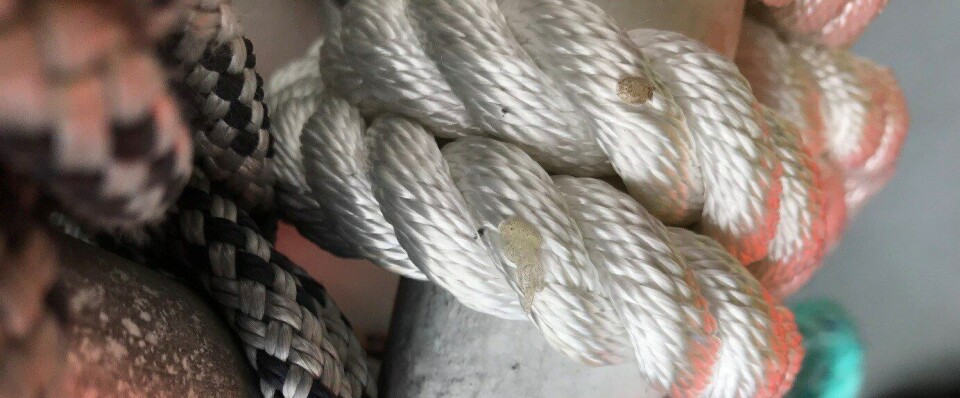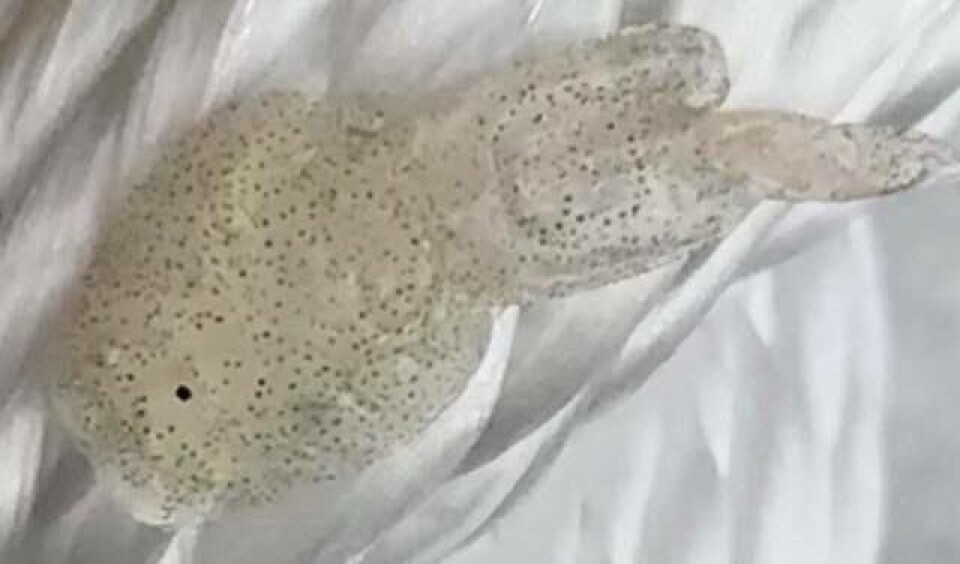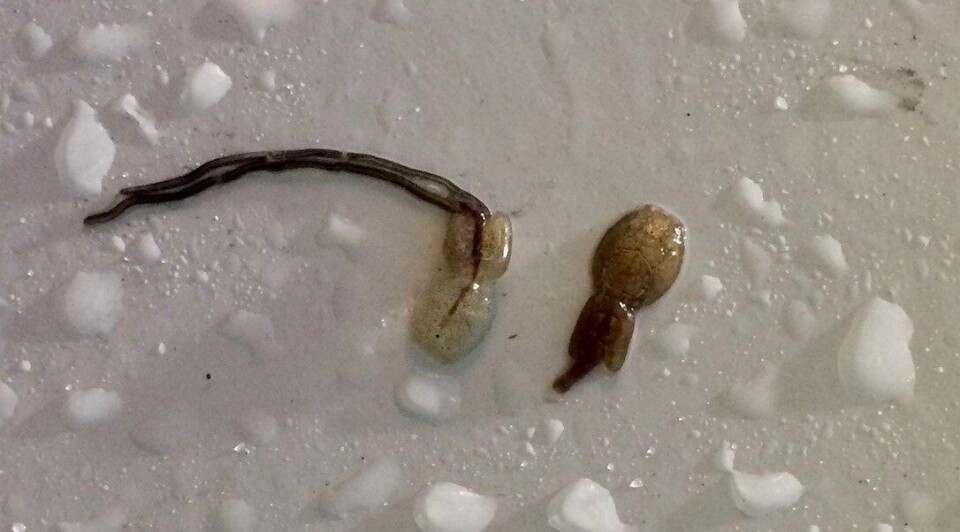
A clear threat? Transparent lice cleaner fish can’t catch
A Norwegian Food Safety Authority (FSA) inspector has voiced concern about the rapid development and spread of transparent salmon lice, which are not caught by cleaner fish.
Mette Kristin Moen, a senior advisor in the FSA, has just returned from three days of inspections in Norway’s central region.
“I’m full of impressions and worries,” she tells Fish Farming Expert’s Norwegian sister site, Kyst.no.
The inspector has seen only clear/transparent female lice at several locations on Fosen and on fish from the Frøya area and says she has received messages from colleagues in several places in Norway who have seen the same evolution.

“I have seen the same picture with an increase of transparent lice in five or six locations in central Norway this autumn,” says Moen.
Rapid development
“I am particularly concerned about the rapid development that has taken place. There are a large number of clear and transparent lice in all stages, which are therefore not eaten by the cleaner fish.”
Moen adds that inspectors also saw a lot of clear lice last autumn, but that there were not nearly as many as there are today.
“The development has happened so quickly and surprised me,” she says. “This means that I will now talk about the problem and make sure farmers and those who work with preventive measures against lice are aware of the problem.”
Moen points out that people working in the Fosen area do not find well-pigmented sexually mature female lice any more.
“Some lice may have a slight pigmentation with a little brown colour, but otherwise it is only clear, sexually-mature lice.”
Several farmers have also talked about seeing a reduced effect of the cleaner fish this year without knowing why, adds the inspector. She is convinced that the problem is that cleaner fish do not see transparent lice particularly well, but pointed out that there can also be other reasons.
“Lice with the trait of little / no pigmentation have now had a great advantage over the well-pigmented brown lice for several years and therefore the transparent lice constitute the bulk of all moving lice. The dark moving lice are eaten by cleaner fish and the transparent ones become sexually mature and spread further without being discovered,” explains Moen.
Harder to count
She believes cleaner fish have done a very good job for the aquaculture industry but says it would be very sad if they lose their ability to pick up the lice because the parasites have become transparent.
Moen believes lice counts can also be more challenging as transparent salmon lice are harder to detect for the counter, especially lice in moving and early stages.
“The biggest problem is nevertheless that lice with these qualities may go well through life and become sexually mature and produce new individuals with the same characteristics.
“The development has been so terrible in just one year. I could never have dreamed that the situation could be the way it is now.”

Lice on recently set-out fish
There have already been sexually mature female lice on fish just recently put to sea, says the FSA official. (See photo, right)
“I think that it is very serious and should be taken seriously. There have been several cases where farmers have treated recently-released fish. There are limitations on how many treatments you can give before the salmon is exhausted, so it’s not the way to go.”
Moen doesn’t think the problem is caused by farmers taking inadequate prevention measures.
“They take real responsibility and work to get rid of the lice,” she says. “The locations I have visited have several important measures like skirts, cleaner fish, etc but still the transparent lice were very present on the fish, and it makes my big concern become fish welfare in the future.”

Drastic measures required
Moen thinks a reason that more people are not concerned about the change is because it has happened gradually and many farmers see lice every day and do not think about the problem to the same extent.
“Comparing a photo taken of salmon lice last year or several years back, and a picture taken today, you see a big change in the colour of the lice. Awareness about this, and drastic measures, are required urgently.”
Moen points out that it is important that farmers now focus on the problem and more people have to become involved in working on it.
“In a couple of years, all moving lice are transparent and the effect of cleaner fish ended. What then?
“Farming must bring up more and effective measures that prevent this occurring and this must be done quickly! Without it, and without cleaner fish help, the industry faces a sharp crisis in a short period of time,” concludes Moen.























































